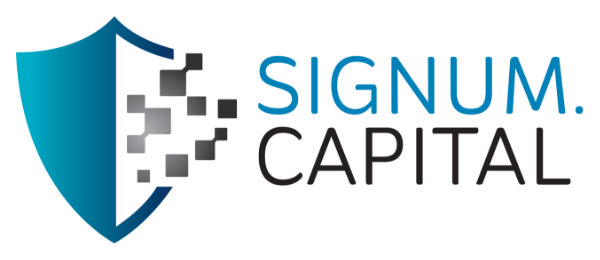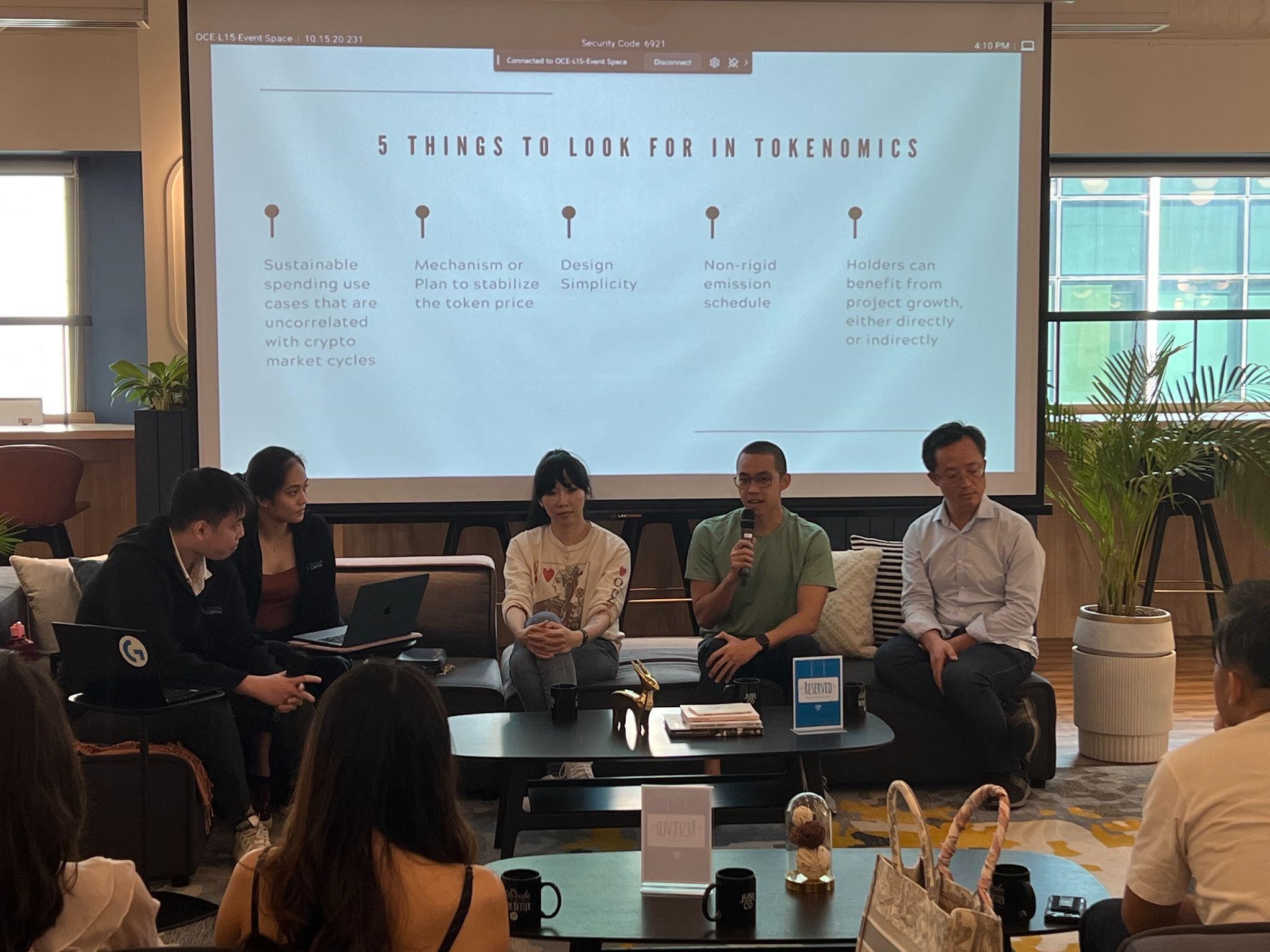Here’s a short summary of the panel discussion held on 3 November 2022. Thank you to our panelists
- How did the panelists get into crypto?
Tascha – She was previously a software engineer and economist with a big passion in macroeconomics. She recognised that web3 was a combination of both which gave her the impetus to jump in.
TN – TN discovered a project called Toast which stood out to him while he was looking into different types of business models in fintech. Toast was using BTC to remit money and TN thought that whatever Bitcoin proposed was very revolutionary and had huge potential. He decided to dig deeper in 2015 when Ethereum was just starting out and became one of the founding members of Kyber. He subsequently started and is currently still working on his own project, Pendle.
Genping – joined Vertex in 2010 where he initially covered deeptech, semiconductors. He subsequently started investing into Fintech which led to a deepdive into the Bitcoin ecosystem.
- Define tokenomics and what does it mean to you?
Tascha – Tokenomics can be referred to as macroeconomic policy for projects. If a project has aspirations to become a semi-medium of exchange, they have to think of it as a model of good macroeconomic policies from countries. Some projects have failed such as P2E, Terra Luna and it is important to find good mental models from a monetary policy point of view where the goal is to support the underlying economy.
TN – Agrees with Tascha and views tokenomics as a form of rewards to users where factors that affect valuation such as supply, distribution, and utility must be considered.
Genping – Uses equity as a basis for understanding tokens; and looks at three things when assessing a business model: 1) Value Creation; 2) Value Capture; 3) Value Distribution. He sees tokenomics fundamentally as trying to change the last component which is distribution by designing different ways to create value
- Key aspects for consideration in creating a good and sustainable token model?
TN – Three main areas to think about: 1) Long term alignment of interest between stakeholders – no fixed number on what and how to allocate but it’s good to take reference from successful projects such as Synthetix/Curve; 2) Design – it should entail user acquisition where means of distribution is through liquidity mining or IEO; 3) Utility – if token exists without contributing to the underlying protocol, it will only end up as a tool for mercenary capital.
Tascha – Standing utility in demand, where demand is not related to crypto market cycles. In other words, how can a project shield itself from collateral damage of boom and bust cycles. She mentioned a project she is advising called Blackburn which is a Web3 loyalty program for restaurants where tokens are earned through visits to restaurants, which entitle the users to discounts and perks. It is important to think about where demand will come from in a non-bull market and have a plan to stabilise token price such as through building up the treasury in preparation for such scenarios. Tascha also mentioned that projects should not have a rigid emission schedule, just as how central banks don’t have rigid monetary policies.
Genping – Perceives token as closer to that of equity but as a better one with economic components which is more of an investment mechanism for wealth appreciation. He hasn’t done much crypto projects because the economics in crypto is complicated. Though he understands that new forms of token design will continue to be developed, he believes that the industry will benefit from better and simpler designs. In addition, he identifies a strong free-rider problem as most token holders think about crypto wealth rather than contributing to the project. This concept applies to equity investments as well where projects should try to engage value-add investors instead of free-riders.
- Interplay of token functions
Tascha – Three kinds: 1) Quasi-equity – unregulated security which will run into trouble; 2) Utility token – try to serve some kind of utility function, things like web3 loyalty points; 3) Projects which have tokens that don’t have any explicit correlation to the project such as uniswap. In the case of such projects, investing in the token is akin to a lottery ticket in a horse race, where the returns from the winning bet do not come from the horse but from the other losing punters. Similarly in the token world where the token of a project appreciates in price because of tacit agreement from the other market participants that it is a better project.
There are ways for token holders to benefit while still being on the right side of regulators by ensuring that the token has utility through its product. For example, a product called Juno which provides banking services. Users earn tokens from every transaction which can then be used as discounts. Another way for token holders to benefit is to enable them to earn some form of reward/yield. However, this yield has to be active rather than passive to not run afoul of the law.
Genping – Two main issues to consider: 1) Does it create value; 2) Is it compliant with regulators. Assuming that value capture works, the token then has to decide on how the value is distributed. He notes that there are a lot of projects which try to go around the Howey Test by designing to the token in a way which would still allow for community building
- How do tokens solve the cold start problem?
(In the case of Sweatcoin) Tascha – Sweatcoin is a move-to-earn project but it’s actually an advertising company integrated into the real economy and uncorrelated to crypto. Tokens can provide a way for projects to attract users from day 1 when the company does not have access to cash flow as it does not cost anything to issue tokens. Tokens can be seen as a bridge loan to solve the cold-start problem, allowing projects to manage their cash flow better. However, at the end of the day the project must be able to provide value back to the token holder. Separately, Sweatcoin only issued their token on Near two months ago but have actually been operating since 2016 as a closed platform, insulated from the volatility of crypto especially at such an early stage. Points to think about for a project issuing a token – to have a token from day 1 or later on when the product is sticky. In the case of a bull market when the token booms, it gives you inaccurate feedback on whether the product is good. Combining tokens with the real economy makes more sense than relying on new users to sustain the economy. Sweatcoin’s model is called move-to-earn but it can actually be anything. It’s about monetising users’ attention and expressing that value to advertisers on a case-by-case basis.
Genping – He believes this behaviour is not unique to crypto. In web2 companies, companies raise money from VCs and use the money to develop user behaviour such as through vouchers. Web2 companies sell equity to VCs, subsidising marketing costs to get traction → Sell more equity to more VCs → Reach some breakeven point. When distributing a token, are projects attracting the right users or speculators. However in an attention economy, tokens are a more effective marketing dollar.
TN – Unlike Web3, Web2 companies are very isolated where the money used to incentivise users remains in its own system. However in Web3, the value is transferrable and can be converted into stables, etc.

